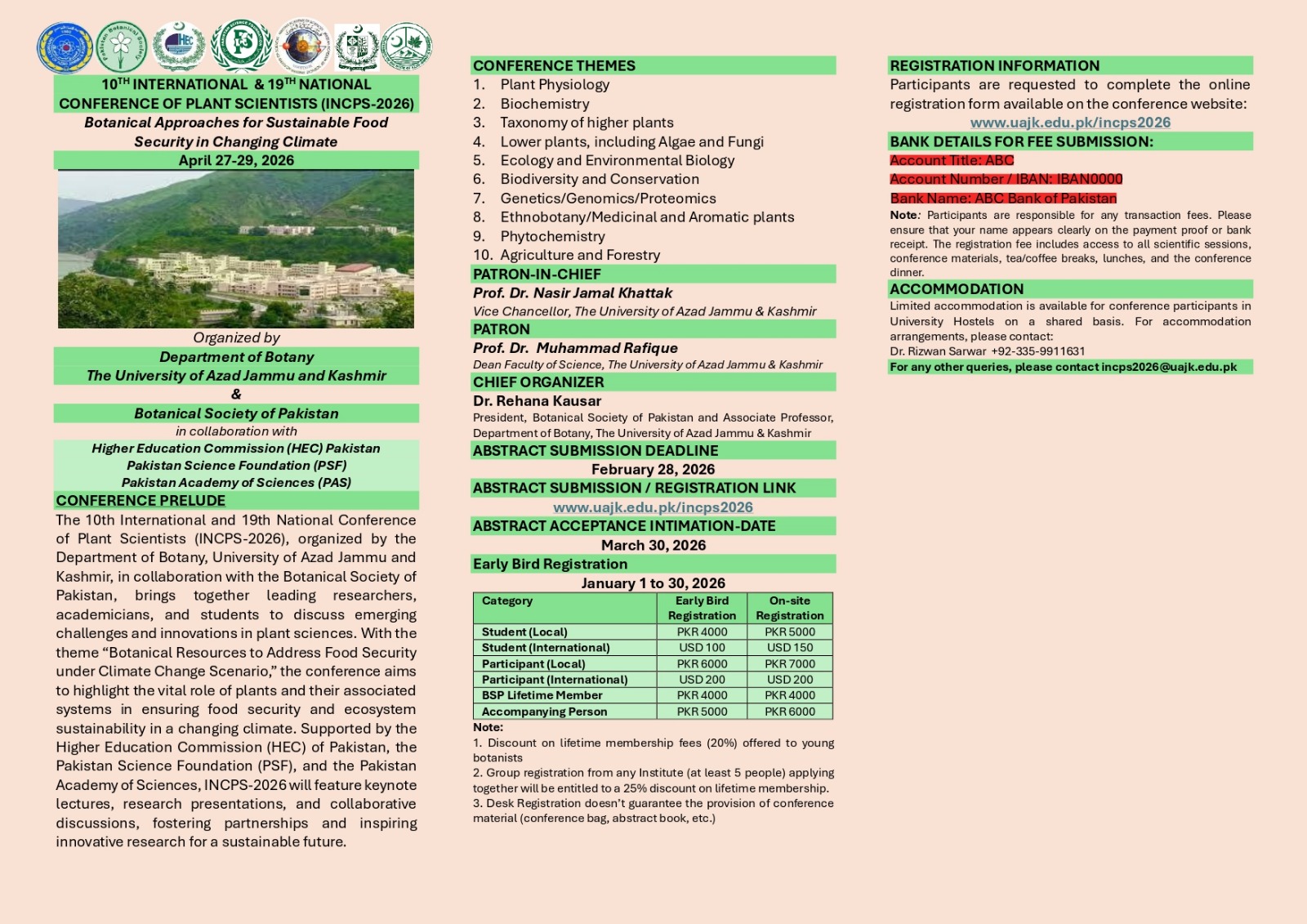
PJB-1994-54
A multivariate analysis of the niches and guild structure of plant populations in a desert landscape
S. Shahid Shaukat
Abstract
The first three components (explaining 71.75% of the total variance) derived from principal component analysis were used to define the ecological niches of the plant populations in a desert landscape. The paper examines the niche parameters of breadth and overlap and investigates the guild structure within the assemblage. On the basis of overall (product) niche width three species Blepharis sindica, Commiphora wightii and Prosopis cineraria were shown to be generalists while five species - Prosopis juliflora, Cordia gharaf, Senna hlolosericea, Rhazya stricta and Grewia tenax appeared to be specialists. Average importance value of species was weakly positively correlated with the niche width. Pairwise niche overlaps varied considerably, ranging from 0.0886 to 0.9958 but the average overlap was high on all three niche axes. Although the niche dimensions were theoretically independent from each other, pairwise overlaps, along the axes were correlated. The extent of diffuse overlap for different species varied with the niche axes. In the three dimensional niche space, Senna holosericea experiences the least overlap while Zizyphus nummularia faces the most. Analytical study of niche packing disclosed that species were packed more closely along niche dimensions than is predicted by competition theory. The problem of interpreting overlap measures as indices of competition intensity are discussed. Analysis of guild structure revealed two major guilds each comprising of two subguilds. Coexistence of species in the face of high niche overlap is explained.
To Cite this article:
Download PDF

